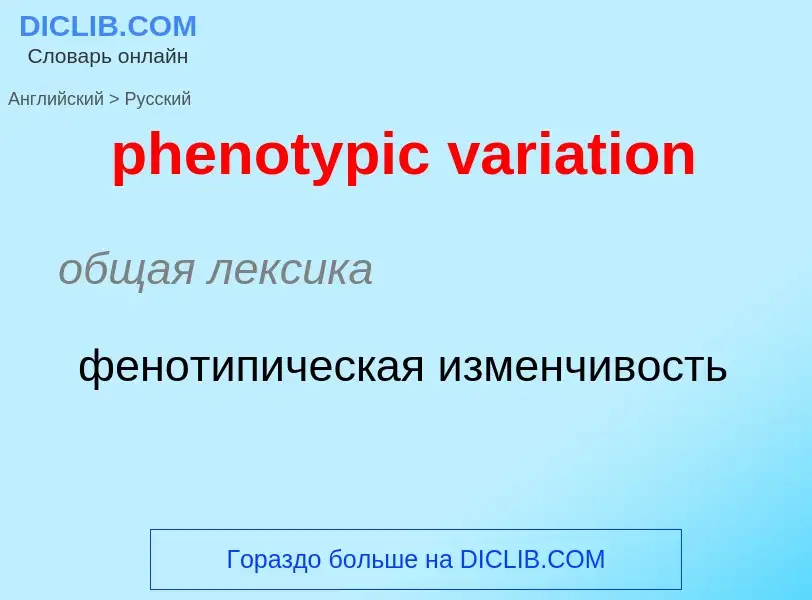Tradução e análise de palavras por inteligência artificial ChatGPT
Nesta página você pode obter uma análise detalhada de uma palavra ou frase, produzida usando a melhor tecnologia de inteligência artificial até o momento:
- como a palavra é usada
- frequência de uso
- é usado com mais frequência na fala oral ou escrita
- opções de tradução de palavras
- exemplos de uso (várias frases com tradução)
- etimologia
phenotypic variation - tradução para russo
общая лексика
фенотипическая изменчивость
['fi:nəutaip]
общая лексика
фенотип
Смотрите также
существительное
биология
фенотип
Definição
Wikipédia

In genetics, the phenotype (from Ancient Greek φαίνω (phaínō) 'to appear, show, shine', and τύπος (túpos) 'mark, type') is the set of observable characteristics or traits of an organism. The term covers the organism's morphology (physical form and structure), its developmental processes, its biochemical and physiological properties, its behavior, and the products of behavior. An organism's phenotype results from two basic factors: the expression of an organism's genetic code (its genotype) and the influence of environmental factors. Both factors may interact, further affecting the phenotype. When two or more clearly different phenotypes exist in the same population of a species, the species is called polymorphic. A well-documented example of polymorphism is Labrador Retriever coloring; while the coat color depends on many genes, it is clearly seen in the environment as yellow, black, and brown. Richard Dawkins in 1978 and then again in his 1982 book The Extended Phenotype suggested that one can regard bird nests and other built structures such as caddisfly larva cases and beaver dams as "extended phenotypes".
Wilhelm Johannsen proposed the genotype–phenotype distinction in 1911 to make clear the difference between an organism's hereditary material and what that hereditary material produces. The distinction resembles that proposed by August Weismann (1834–1914), who distinguished between germ plasm (heredity) and somatic cells (the body). More recently, in The Selfish Gene (1976), Dawkins distinguished these concepts as replicators and vehicles.
The genotype–phenotype distinction should not be confused with Francis Crick's central dogma of molecular biology, a statement about the directionality of molecular sequential information flowing from DNA to protein, and not the reverse.



![''[[Biston betularia]]'' morpha ''typica'', the standard light-colored peppered moth ''[[Biston betularia]]'' morpha ''typica'', the standard light-colored peppered moth](https://commons.wikimedia.org/wiki/Special:FilePath/Biston.betularia.7200.jpg?width=200)


